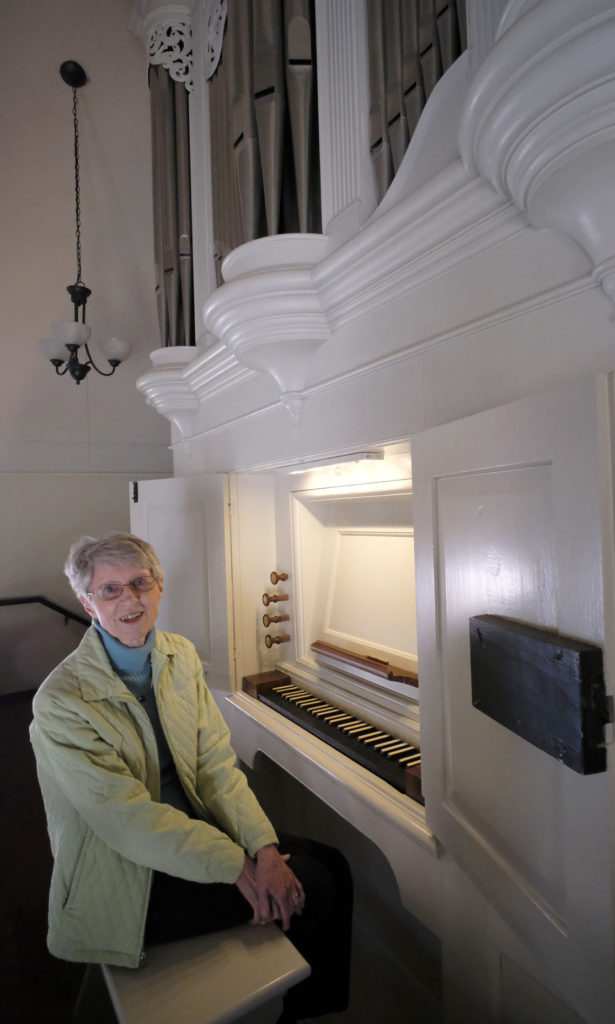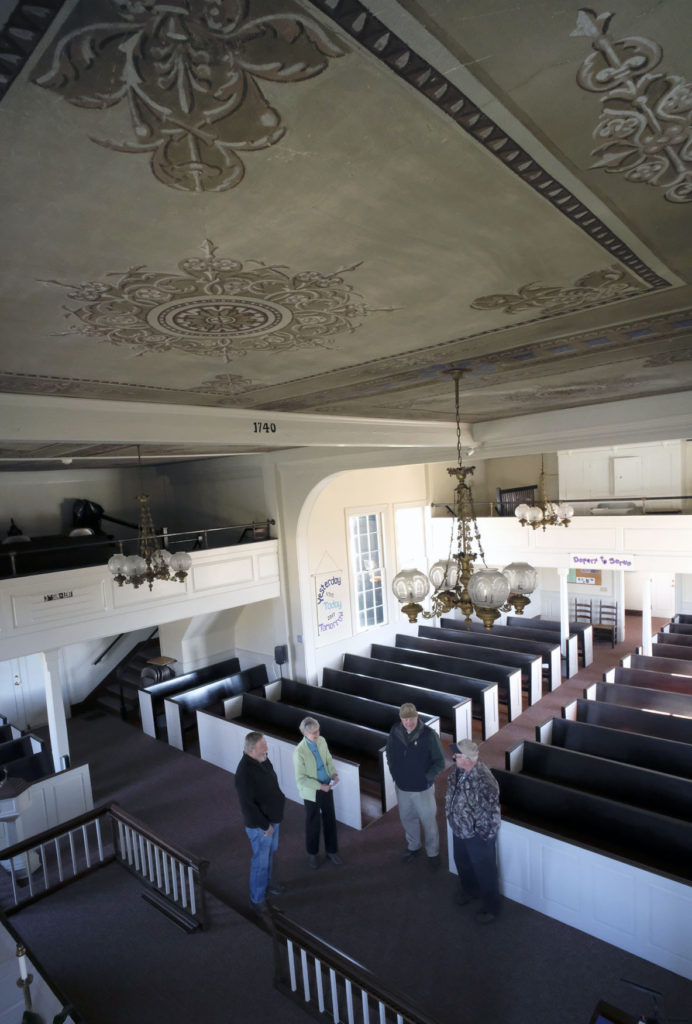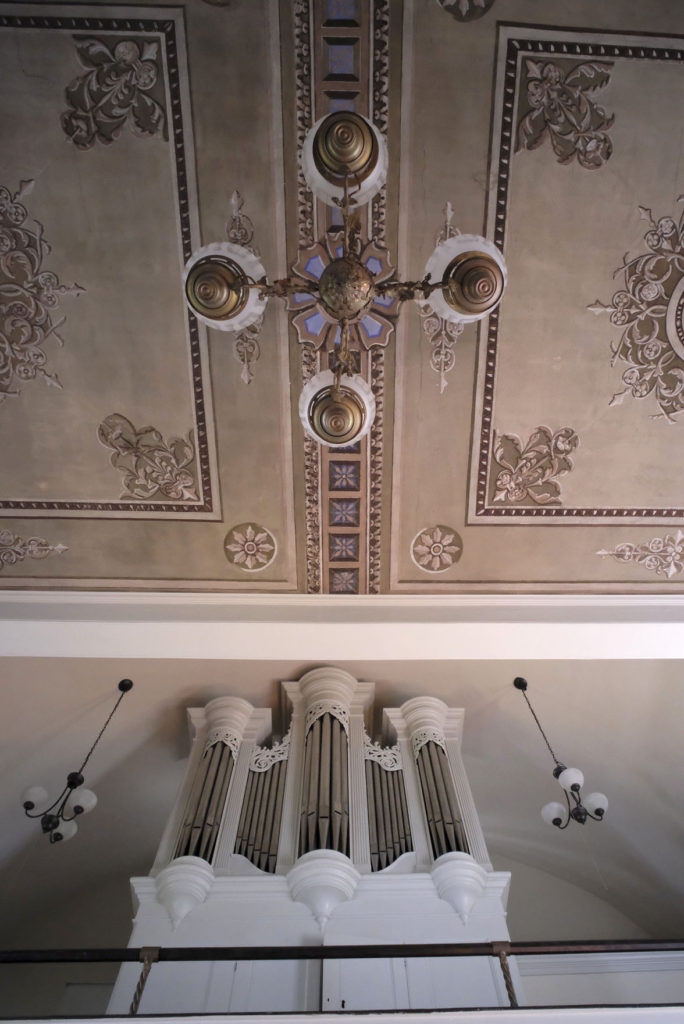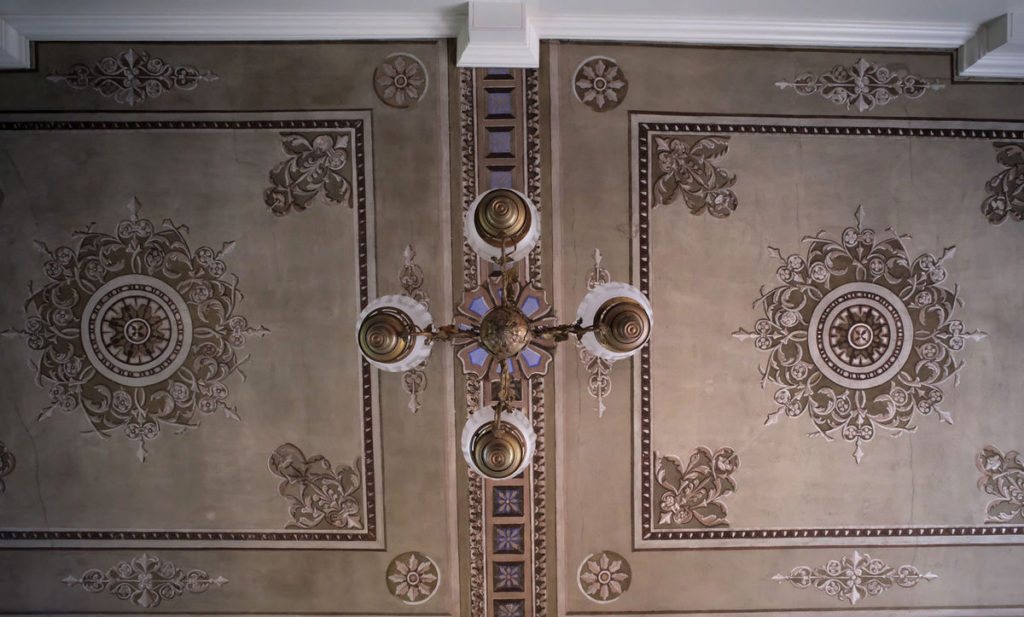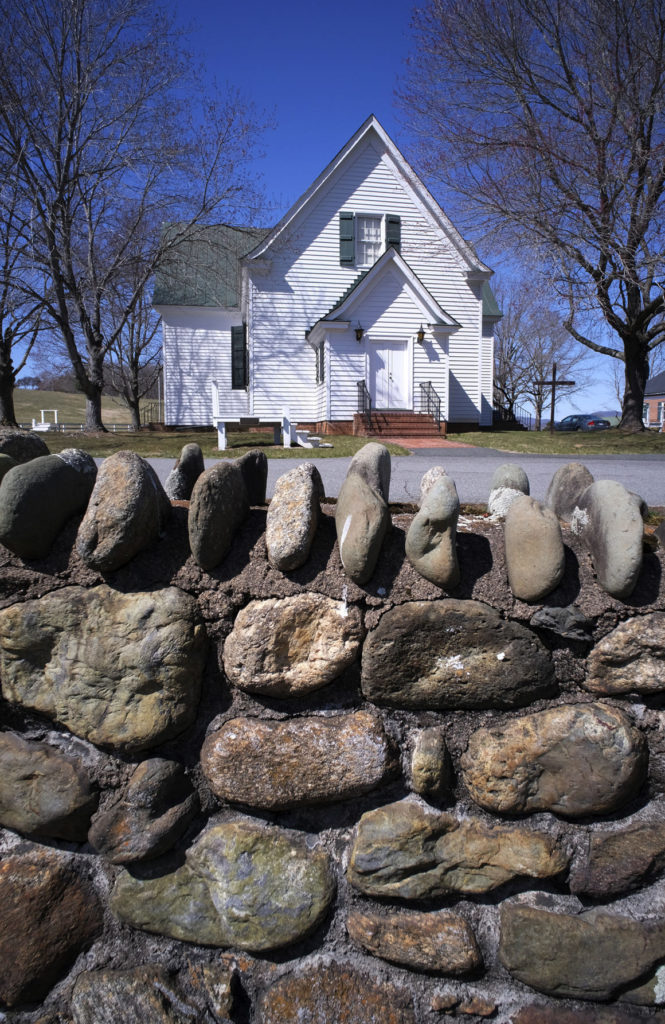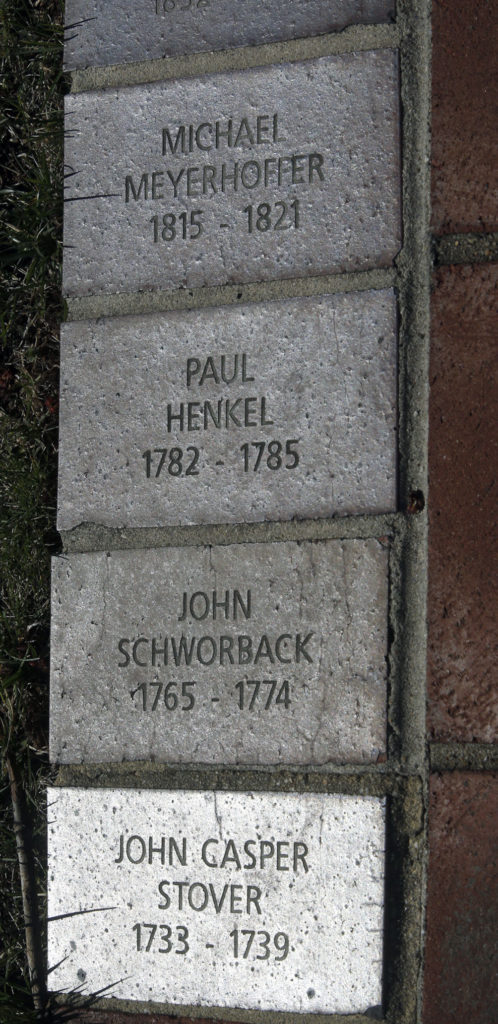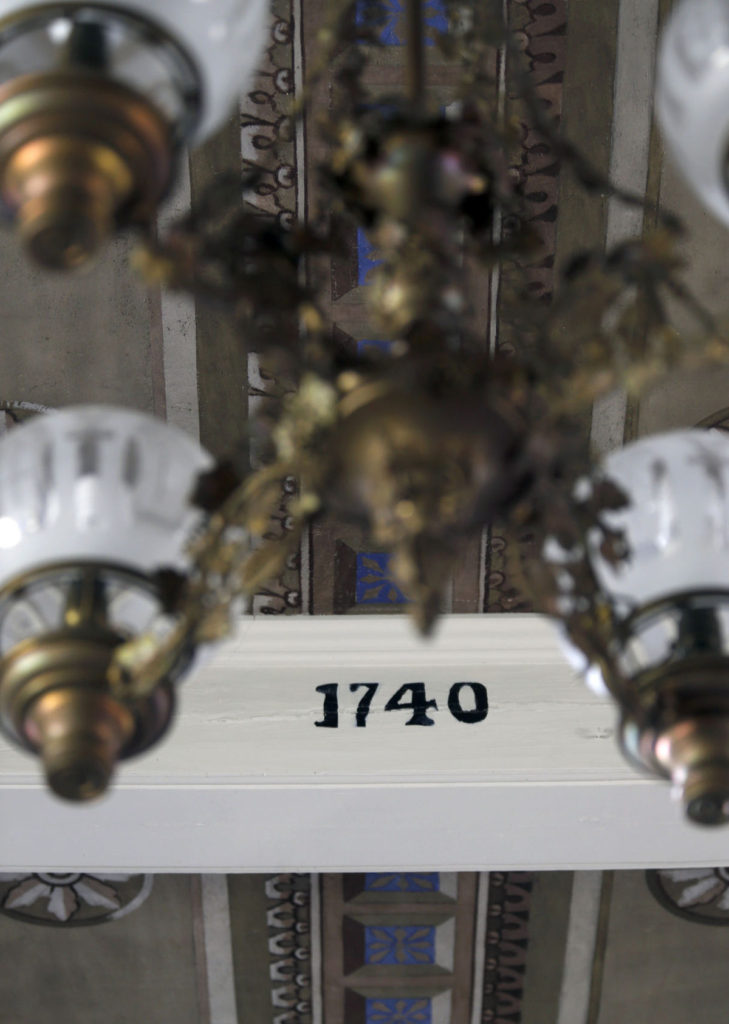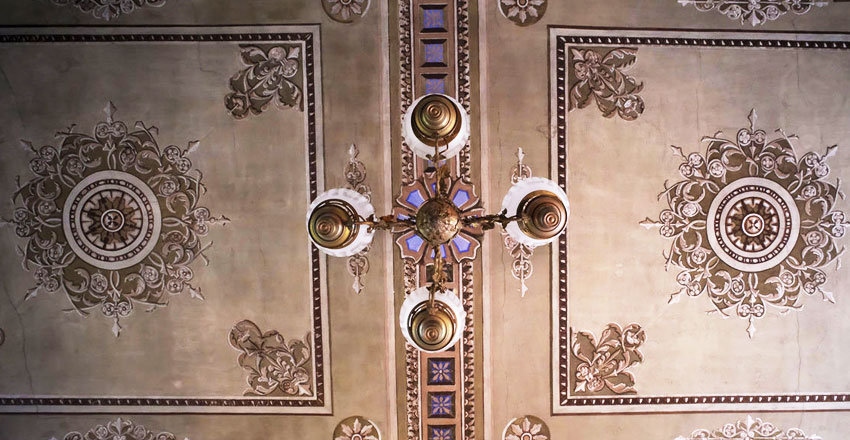
The Richmond-Times Dispatch recently published an article about the Hebron Lutheran Church and its anniversary. The article is written by Bill Lohmann.
–
When you arrive at Hebron Lutheran Church, you are immediately struck by the notion that it would be difficult to find a prettier setting for a church. Or anything, for that matter.
The gleaming house of worship sits in the foothills of Madison County, surrounded by patchwork fields, stands of trees, and mountains in the distances. Country roads meander through the scene. Even a river — the Robinson and assorted streams — runs through it.
“Isn’t it awesome?” said Hebron’s pastor, the Rev. Patricia Covington.
At Hebron, the beauty is accompanied by a healthy measure of history.
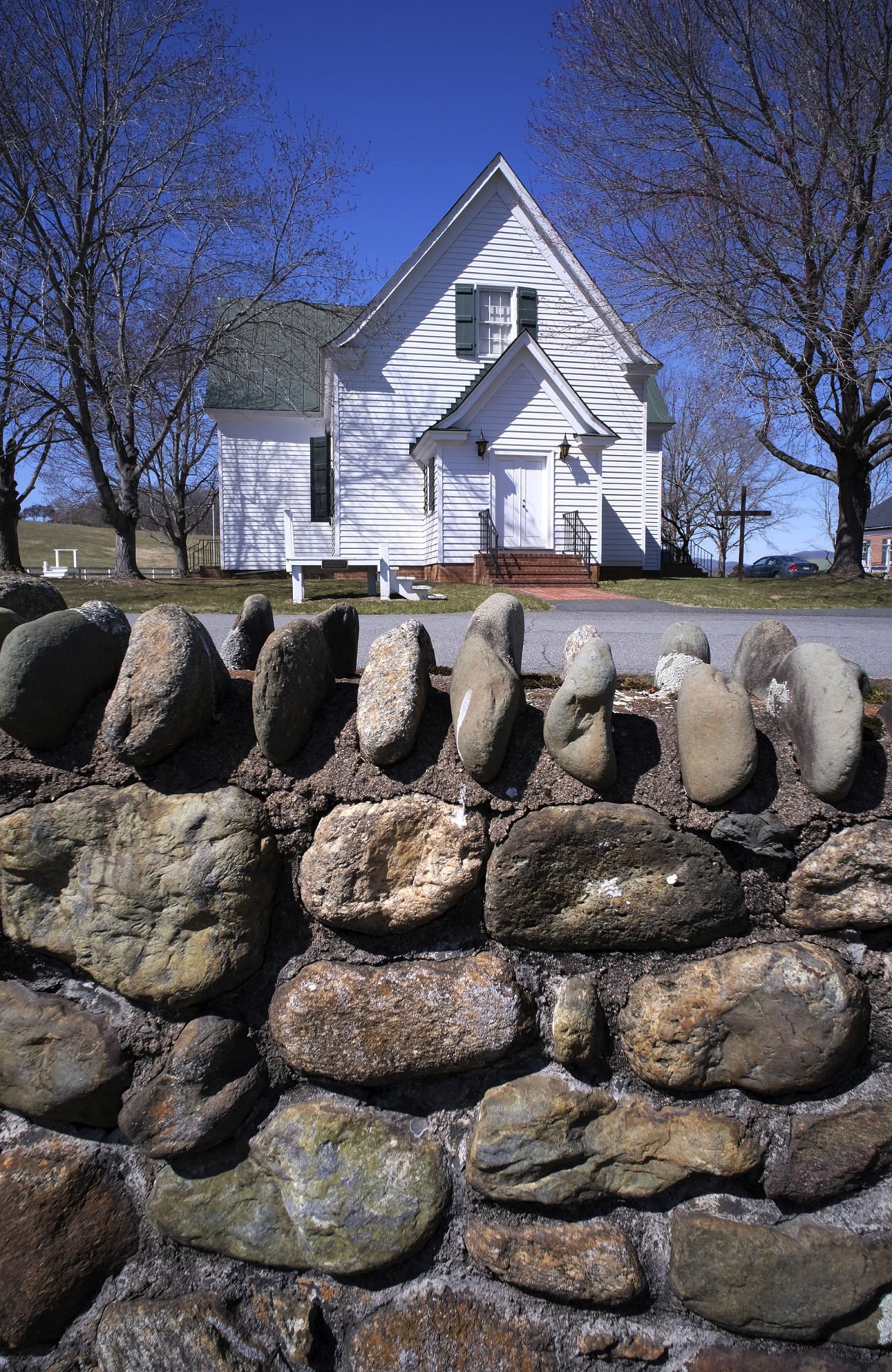 The church is celebrating its 300th anniversary this spring, a milestone that neatly coincides with this year’s commemoration of the 500th anniversary of Martin Luther hanging his 95 Theses on the door of the Wittenberg Castle church, launching the Protestant Reformation.
The church is celebrating its 300th anniversary this spring, a milestone that neatly coincides with this year’s commemoration of the 500th anniversary of Martin Luther hanging his 95 Theses on the door of the Wittenberg Castle church, launching the Protestant Reformation.
“I think they planned that very well,” Covington with a laugh.
The church believes it is the oldest Lutheran worshipping community in the South — the congregation organized in 1717, and the church building was constructed in 1740 — and that its building is the oldest in continuous use as a Lutheran church in the United States. It also is said to be one of four surviving wooden churches from Virginia’s Colonial heritage.
Just so visitors are aware Hebron has a seriously old tale to tell, three stiles remain outside the church. Stiles are wooden structures that enabled worshippers to dismount from horseback or horse-drawn carriage, then step over the fence that once surrounded the church and into the churchyard. The fence is long gone, but the story remains.
Hebron will officially celebrate its 300th on April 30 with a special service and festivities, though it seems to appreciate its notable heritage all days.
Photographer Bob Brown and I arrived last week for a visit and were greeted in the churchyard by Bill Price and Dave Allen, members of the church’s leadership council. Price, 71, grew up in the church, and Allen described himself as a “new member.” He came in 1990.
Price has the added distinction of being chairman of the 300th anniversary committee.
What he didn’t have, though, as it turned out, was the key to the church.
So he quickly telephoned Judy Ann Fray, also a member of council, who lives nearby. In a few minutes, she drove up.
“Hi there, I’m Judy Ann Fray. I’m chairman of the historical committee,” she introduced herself. “That doesn’t mean I know everything.”
“But you have the key?” I asked.
“I have the key,” she replied.
She led us into the church, a lovely though elegantly plain structure. It’s a white frame building — constructed no doubt with wood harvested from the forest the settlers found when they arrived in the 1700s — with no steeple and no stained-glass windows, niceties that might have seemed extravagant to a community of German immigrants.
Price said with a smile that you might say the Germans who founded the church were “prudent and frugal.”
Fray said there’s another way to look at the lack of fancy colored glass. “It’s so wonderful to have the outside in,” she said.
However, the church is hardly austere. An itinerant Italian artist painted the plastered ceiling, which looks like a richly textured carpet from the floor. The loft at the back of the church is home to a Tannenberg pipe organ, installed in 1802 and restored in recent years.
 The organ, built by Pennsylvanian David Tannenberg and delivered by ox cart, is one of only nine Tannenberg organs still in existence, according to church officials, and the only one that remains in its original location.
The organ, built by Pennsylvanian David Tannenberg and delivered by ox cart, is one of only nine Tannenberg organs still in existence, according to church officials, and the only one that remains in its original location.
***
By the time the church founders reached the splendor of the Robinson River valley, they must have been grateful not just for the beauty but simply to have arrived at a destination they had sought for so long.
They had left Germany, headed for what would become America, but were waylaid in London. Fray said the story goes that once in England, their travel plans changed — the voyage they thought they were destined for didn’t happen and they had to find a new way to the New World. They remained in London for an extended period, becoming a community and establishing their faith community there.
Sailing from England in 1717, they wound up coming to Virginia as indentured servants of royal Lt. Gov. Alexander Spotswood, arriving as the second wave of German immigrants brought here to work in iron mining in what is now Spotsylvania County, according to the Germanna Foundation, which preserves the heritage of the earliest organized settlements of Germans in Colonial Virginia.
Beginning in 1725, according to the foundation, the Germans moved to what was then the Western frontier: the Robinson River valley, where land was divided among the families. After church leaders returned to Europe to raise money, the church was eventually constructed in 1740. Later, the first school for German-speaking colonists started at Hebron.
Church members are proud that on a snowy day in January 1789, a political debate featuring two future presidents, James Madison and James Monroe, was held at the church. The men discussed the newly adopted U.S. Constitution as they competed for a seat in Congress. Madison won the election the following month.
The church has a membership in the range of 150, Covington said, though many do not live in the area any longer but still consider it their “home” church. The typical weekly attendance is between 40 and 75, she said, with more at Christmas and Easter.
The 300th anniversary, Covington said, is “a very big deal.”
“It’s a historical thing, but it has religious significance,” said Covington, who has served as pastor at Hebron for five years and is retiring in June. “What we’re really celebrating is the faithfulness of God, that God has been with this congregation for 300 years. It’s been operating for 300 years, and God hasn’t gone anywhere. People have come and people have gone, and it goes on.
“It has to be a God thing because if it was a human thing,” she said with a laugh, “it wouldn’t have worked.”
Hebron lives in the hearts of its congregation, many of whom descend from the original families that founded the place, Covington said.
The attachment is natural and obvious: “Their forefathers came here and worshipped here, and lived and died here,” she said.
But the deep feelings run through others, too.
Fray, 71, came to Madison as a recent college graduate almost 50 years ago, a trainee in the Virginia Cooperative Extension. She married a church member and never left.
“I cannot leave,” Fray said of the church. “It’s just part of my life.”
She took us to the organ loft where she sat and played “Abide With Me” and then “Kumbaya,” so we could hear the Tannenberg fill the sanctuary.
“The people mean a lot, but this building means a lot,” she said. “It binds the people together … in their faith in God.
“One of the responsibilities that we as members of this congregation have is to keep it going and to keep it in good condition. That was in the thank-you letters that were written to the people in Europe who gave contributions to this congregation back in the 1700s.”
[email protected], (804) 649-6639
These photos are by photography Bob Brown for the newspaper (click to enlarge):

